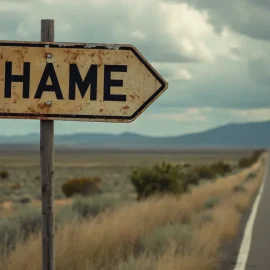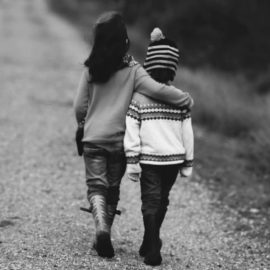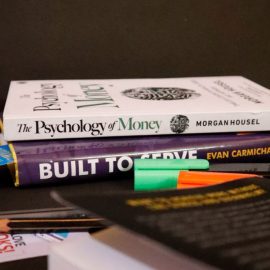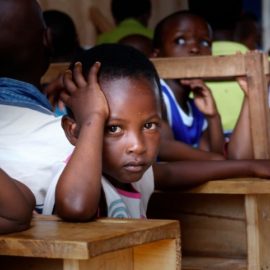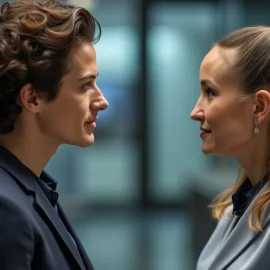
Why is it hard for victims of abuse to form connections, and how can they recover? How does complex PTSD (CPTSD) influence relationships?
Many people struggle with CPTSD, and relationships are hard for those who do. Because abuse has such an effect on relationships, it takes time and effort for survivors to learn to form healthy friendships.
Read on for more on how trauma survivors can heal and develop healthy connections with new people.
Socially Recovering From CPTSD
The previous sections have focused on trauma survivors as individuals, but another crucial part of recovering from CPTSD is learning how to form healthy relationships. CPTSD and relationships are linked because of the way abuse influences a person’s ability to connect with others. People have deep-seated needs to feel safe and loved, and the only way to meet those needs is through meaningful connections with other people. “Safe” in this context doesn’t just mean physically safe, but also safe to be fully themselves: to freely express their thoughts and feelings without the fear of ridicule or punishment.
Remember that CPTSD occurs when the most important people in someone’s life—such as family members or romantic partners—habitually abuse and neglect that person. This conditions the survivor to believe that all people are dangerous: If they couldn’t trust the people they were closest to, who could they possibly trust now?
| Neuroplasticity: How the Brain Changes in Both Trauma and Recovery The conditioning described here doesn’t just change a person’s thought patterns, it physically changes how their brain works. This is possible because of neuroplasticity, which means the brain’s ability to change and adapt. In Behave, neurologist Robert Sapolsky explains that the brain works like a muscle: The parts that a person uses a lot grow bigger and stronger, while the parts that they don’t use as much shrink and become weaker. In short, the brain gets better at doing what it habitually does. Unfortunately, for someone with CPTSD, neuroplasticity means that their brain has become very good at protecting them from other people, but very bad at determining who’s actually dangerous and who isn’t. This also means that they can’t just decide to stop being afraid—they have to recondition themselves and rewire their brains to stop assuming that other people are a threat. To illustrate this point, in The Body Keeps the Score, psychiatrist Bessel van der Kolk cites a study that compared brain functions in people with PTSD and those without. The participants were hooked up to a brain scanner and shown images of a cartoon character making eye contact with them. In people with PTSD, the areas of their brains associated with defensive and protective behaviors were immediately activated. In people without PTSD, areas of the brain associated with social skills were activated instead; this suggests that they were interpreting the character’s expression and intentions, rather than immediately considering it to be a threat. |
Finding Meaningful Connections
The importance of strong social bonds is well documented and widely accepted, but how can someone who believes people are dangerous start to form deep, meaningful, supportive relationships with others?
In many cases, a survivor’s first meaningful connection is with their therapist. When someone’s conditioned to be afraid of others, sharing personal details and leaving themselves emotionally vulnerable feels much too dangerous to risk. Therefore, therapy may be the first time they’re able to talk honestly about their thoughts, feelings, and past experiences.
Trauma support groups or online forums about recovery are also good places for someone with CPTSD to begin looking for healthy connections with other people. For survivors who aren’t ready to join new social groups, a pet can also be an excellent source of love, acceptance, and connection.
(Shortform note: It’s notoriously hard for adults to make new friends—one study found that in 2004, the average American had zero close friends—and it’s even more difficult for people with CPTSD. One reliable way for adults to make new friends is to join a group that interests them, where they’ll naturally meet other people who share that interest and interact with them regularly. Also, making new friends sometimes takes a certain amount of boldness: To make friends they wouldn’t make otherwise, people may have to accept invitations they’d normally turn down or try making the first move to start a new friendship. For reasons that we’ve discussed, all of these things are exceptionally hard for people recovering from complex trauma.)
Social recovery is the last stage of recovering from CPTSD, since it requires a certain degree of self-esteem and self-confidence—things that complex trauma conditions out of people. In fact, trying to form social bonds too soon can cause further harm, as rejection or humiliation might confirm the survivor’s beliefs that they’re unworthy of love and that other people are unsafe.(Shortform note: It might seem strange that a simple rejection could cause further trauma, but doctors say that people respond psychologically to rejection in the same way they respond to physical pain. In fact, the responses are so similar that over-the-counter painkillers have been shown to reduce the pain of hurt feelings. This suggests that—especially for people with CPTSD, who already see others as threatening—walking into a social situation could feel as risky as putting themselves in physical danger.)


